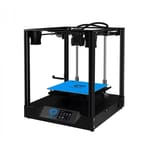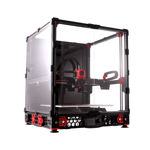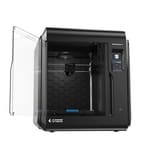FlyingBear, which seems to have modestly (if inconsistently) rebranded from its former two-worded name “Flying Bear”, is a 3D printer manufacturer who rarely grabs our attention. Last time, its Ghost 4S 3D printer garnered enough praise that we felt a quick look was in order, and before that, we raised an eyebrow due to controversy between the company and reputable YouTube channel Maker’s Muse.
But FlyingBear continued to release new products that have flown below our radar. Until its most recent, that is, which has caused a blip on our figurative screen: the FlyingBear Reborn.
Besides evoking nightmares of aerial bears emerging from the womb, this new printer is interesting, seeming to deliver much of what we’d like to see from the competition. Many of the most attractive implementations were already present on the company’s more affordable and now out-of-stock Ghost 6 3D printer, albeit with tradeoffs including a smaller build volume. So, the Reborn could be worth it.
Is the FlyingBear Reborn flying high on our list of 3D printers to watch? Or is it flying too close to the sun? Find out all we know below.
Features
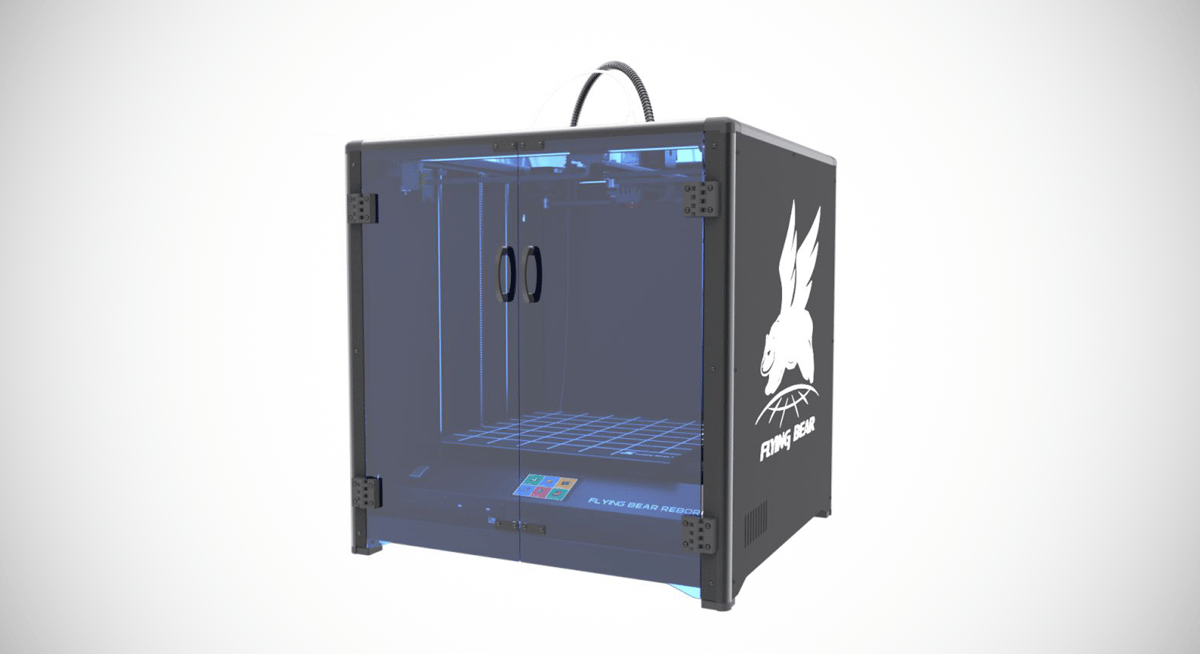
CoreXY Arrangement
These kinematics are all the rage these days. CoreXY mechanical arrangements take a little more maintenance to ensure the long single belt controlling its motion remains taut but are generally praised as fast and accurate systems.
FlyingBear has already had some practice with this type of system, its previous Ghost 6 3D printer also being a CoreXY system. If you go looking for FlyingBear’s older systems to save a buck, mind that some are erroneously labeled as CoreXY. As far as we can tell, only the Ghost 6 and Reborn are CoreXY units.
Partially Enclosed Build Volume
Something FlyingBear seems to be known for is its sturdy all-metal box frames. We can’t help but appreciate that bit of luxury. In the case of the Reborn, the metal chassis surrounds a generous 350 x 310 x 340 mm partially enclosed build volume.
The build area’s clear door should help to keep things warm if you’re printing with materials prone to warping, like ABS, but it seems FlyingBear isn’t including its foldable cover that made the Ghost 6 a fully enclosed CoreXY. It’d be nice to see one as an option in the future. But, with a maximum of 260 °C for the hot end temperature, you won’t be printing with the most demanding materials anyways.
Y-Axis Linear Rail
While the X and Z-axes rely on linear rods, the Y-axis, which the printhead travels across, comprises of a sturdy linear rail.
This is excellent since the Y-axis, and the shifting weight it carries due to a mobile printhead, will have the least evenly distributed weight. And rigid linear rail helps to alleviate the potential problems caused here.
Integrated Wi-Fi
Here’s something we’ve been asking for – integrated Wi-Fi file transfer.
Tacking on a Raspberry Pi with an OctoPrint installation is popular because folks want to send and start files over their local connections. Is that so hard to understand! An increasing number of manufacturers are beginning to agree, and FlyingBear is among them. The Reborn, like the Ghost 6 before it, has Wi-Fi file transfer built-in. Keep your butt firmly planted.
Further Features
BMG-Style Direct Extruder
You can knab a Bondtech-style BMG extruder for about nine bucks on AliExpress, but FlyingBear has gone and included one for you as a direct extruder here. The dual-drive extruder is popular for a reason and will provide some good power for your push.
Patented Anti-Backlash Nuts
The company is touting its patented anti-backlash nuts, which it says “makes the Z-axis run more smoothly.” We couldn’t find the patent filing, but from the provided image, it looks like the novel aspect is four additional small springs surrounding the anti-backlash nut to help keep it in place on the lead screw.
Color Touchscreen
FlyingBear looks to have a very colorful UI for its touchscreen interface. We’ve said it before, and we’ll say it again – touchscreens can make or break an experience. So let’s hope it’s a good one. Notably, the firmware includes an emergency stop on the home menu. This should ideally be a hard switch, but it’s something most manufacturers avoid entirely – so the detail is appreciated.

Reviews
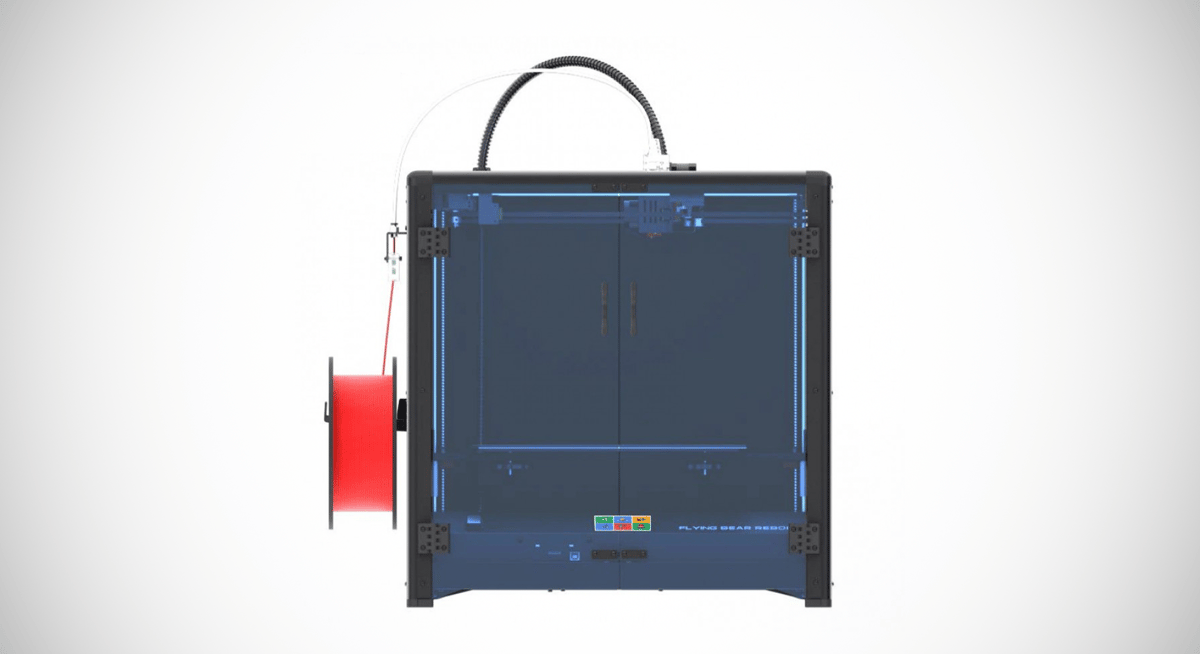
It seems it’s not just us the FlyingBear is flying low around. Though we first saw the FlyingBear Reborn pop-up for purchase last summer, we can’t find a review of the machine. There are just a handful of customer reviews – mostly on AliExpress. Those reviews are almost entirely positive, though, if that means anything. We’re shooting a touch in the dark on this one, but it looks reasonably promising.

Price
The FlyingBear Reborn, at its price of $700, is quite a measure more expensive than FlyingBears previous 3D printers. The closest alternative, the FlyingBear Ghost 6, was a machine with near feature parity for just $400 – though it was limited to a much smaller 255 x 210 x 210 mm build volume.
The FlyingBear Reborn falls between current prices for our favorite CoreXY machines, but it has some attractive extras, such as the partially enclosed build volume with an all-metal frame and integrated Wi-Fi.

Tech Specs
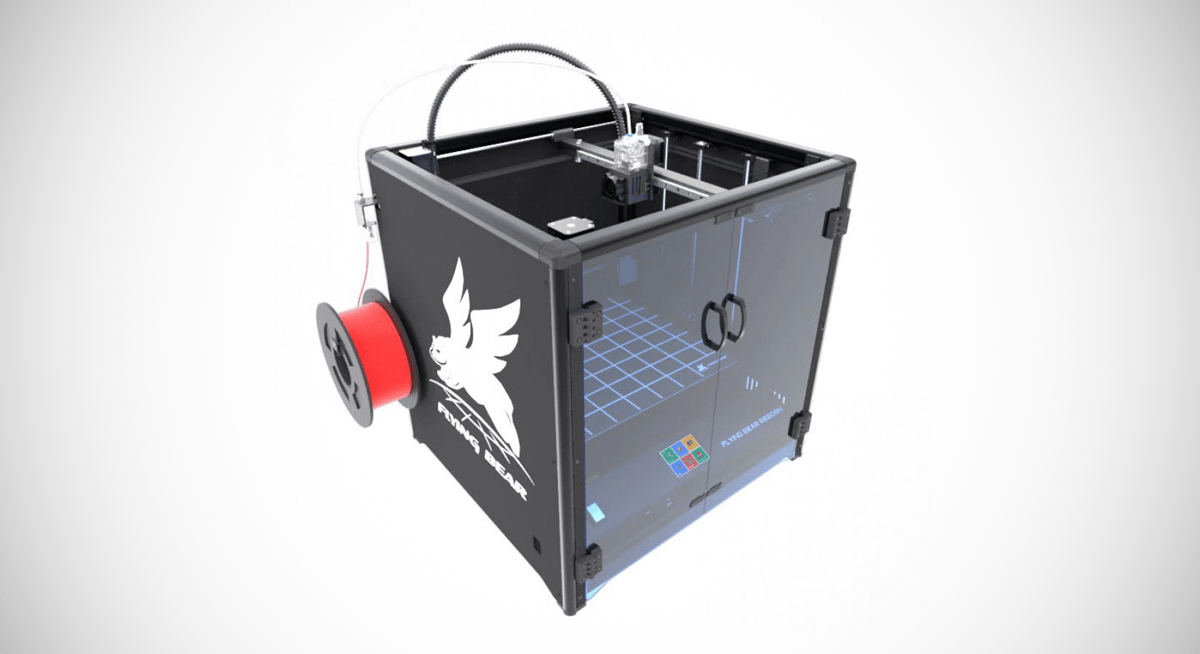
General Specifications
- Technology: Fused deposition modeling (FDM)
- Year: 2021
- Assembly: Partially-assembled
- Mechanical Arrangement: CoreXY
- Manufacturer: FlyingBear
3D Printer Properties
- Build Volume: 350 x 310 x 340 mm
- Feeder System: Direct drive
- Print head: Single nozzle
- Nozzle size: 0.4 mm
- Max. hot end temperature: 260 °C
- Max. heated bed temperature: 110 °C
- Print bed material: Layered glass
- Frame: Aluminum
- Bed leveling: Manual
- Connectivity: Wi-Fi, SD card, USB
- Print recovery: Yes
- Filament sensor: Yes
- Camera: No
Materials
- Filament diameter: 1.75 mm
- Third-party filament: Yes
- Filament materials: PLA, ABS, TPU, PVC
Dimensions and weight
- Frame dimensions: 566 x 530 x 580 mm
- Weight: 30 kg

Similar Printers
With the mechanical arrangement’s surging popularity, plenty of other attractive CoreXY offerings are on the market. If the FlyingBear Reborn isn’t quite doing it for you, take a look at our buyer’s guide, The Best CoreXY 3D Printers in 2022.
Or, take a gander at some of these alternatives:
Two Trees Sapphire Pro
If the use of rigid linear rails is what’s catching your attention with the FlyingBear Reborn, there are a few other CoreXY options for you — the Two Trees Sapphire Pro is one of the best. It includes linear rails on both the X and Y-axes, unlike the Reborn’s single Y-axis linear rail. We think rigidity on the Y-axis is the most important here, but more high-quality guides don’t hurt.
You do lose quite some build volume with the Sapphire Pro’s 235 x 235 x 235 mm print area, the partial enclosure, and integrated Wi-Fi connectivity, but you also shave the cost down to just $300. For that, you keep the dual-drive BMG extruder (though in a Bowden configuration), 260 °C hot end, and the nice touchscreen interface, but also get stock auto bed leveling — which is a pretty valuable feature if you ask us.
Voron 2.4
If you’re not afraid to get your hands dirty with a DIY kit, the Voron 2.4 is an open-source CoreXY 3D printer being lauded far and wide. Since it’s open-source, you can build a Voron with any parts you want, but there’s an official bill of materials expected to deliver the best results. You can buy kits with these materials from some vendors to make sourcing easier, but you may still need to print some of the parts yourself.
The Voron 2.4 steps its motion game up a little further and includes rigid linear rails for all three axes. It also uses a stationary print bed — moving the XY arrangement up and down instead — which some people prefer as it can reduce vibration on the build surface. Since you’re putting the Voron 2.4 together yourself, you can choose between 250, 300, and 350 mm³ build volumes. Whichever suits your needs. Or, if you don’t mind a small 120 mm³ volume, the Voron 0.1 might be for you.
For all its greatness, the Voron 2.4 is pricey. Even as a DIY kit, it’ll run you $1,000. We think it’s worth it, though. That’s why we’re building one ourselves!
Flashforge Adventurer 4
If you’re not particular about a CoreXY assembly, but like some of the bells-and-whistles the FlyingBear Reborn is offering, check out the Flashforge Adventurer 4.
The Adventurer 4 includes the surprisingly uncommon integrated Wi-Fi that the FlyingBear Reborn has, but also a fully enclosed build volume of 220 x 200 x 250 mm. Aside from being fully enclosed, it has a few features the Reborn is missing. For one, the enclosure expands to the filament — so if you’re in a humid environment, you can keep your hygroscopic materials dry. It also includes a built-in camera for remote monitoring, handy quick-release nozzles, and a “leveling-free” build platform.
It’s labeled at $850 these days, but we often see it discounted by $100 or more. So, if you’re considering a FlyingBear Reborn, all those extra features might make the Adventurer 4 worth considering.

Lead image source: FlyingBear
License: The text of "FlyingBear Reborn: Specs, Price, Release & Reviews" by All3DP is licensed under a Creative Commons Attribution 4.0 International License.
CERTAIN CONTENT THAT APPEARS ON THIS SITE COMES FROM AMAZON. THIS CONTENT IS PROVIDED ‘AS IS’ AND IS SUBJECT TO CHANGE OR REMOVAL AT ANY TIME.



